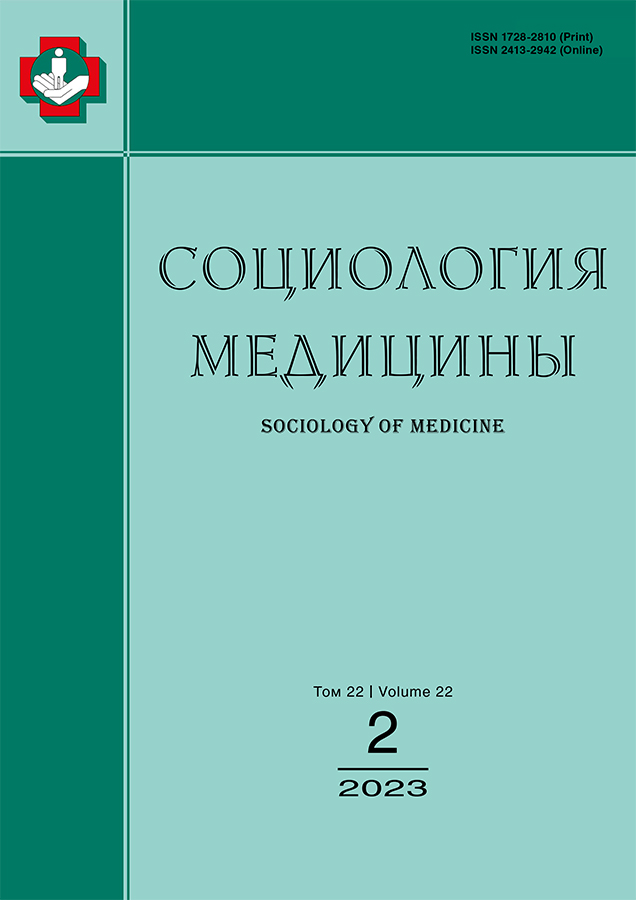Some peculiarities of professional activity of primary care physicians of the regional health care system in the conditions of the COVID-19 pandemic
- Authors: Grigoreva E.A.1, Sapogova M.D.1, Rebrova A.A.1
-
Affiliations:
- Saratov State Medical University named after V.I. Razumovsky
- Issue: Vol 22, No 2 (2023)
- Pages: 170-175
- Section: SOCIOLOGY OF MEDICAL PROFESSION
- URL: https://rjsocmed.com/1728-2810/article/view/623363
- DOI: https://doi.org/10.17816/socm623363
- ID: 623363
Cite item
Abstract
BACKGROUND: The coronavirus disease 2019 (COVID-19) pandemic has demonstrated the low preparedness of most modern healthcare systems to respond rapidly to emerging threats. For many years they were aimed mainly at planned medical care and could not quickly reorganize themselves to organize one-time medical care for a large number of patients with a severe course of coronavirus infection. By the beginning of the epidemic, there was a staff shortage in the Russian healthcare system, and the workload of the remaining staff increased significantly.
According to the authors, it seems relevant to study the opinion of doctors of territorial polyclinics of the regional health care system about changes in their professional activities in the conditions of coronavirus infection.
AIM: To study the peculiarities of the professional activity of primary care physicians of the regional healthcare system in the conditions of the COVID-19 pandemic.
METHODS: The study involved 171 physicians from territorial polyclinics of the Saratov region. The study of the professional activity of primary care physicians of the regional health care system in the conditions of the COVID-19 pandemic was conducted using the questionnaire developed by the academician of the Russian Academy of Sciences A.V. Reshetnikov. Part of the questions of the questionnaire assumes the possibility of several alternative and free answers.
RESULTS: The main problem in rendering care to patients in conditions of COVID-19 pandemic respondents considers the limitation of availability of planned medical care to patients with chronic diseases. The reasons for the reduction of quality and availability of medical care to patients 100% of respondents consider the workload of medical personnel with COVID-19 patients, staff shortage due to their dismissal and high incidence of COVID-19 infection among doctors themselves, reduction of bed capacity of specialized hospitals due to conversion to COVID departments.
CONCLUSION: Since 2020, in the situation of the COVID-19 pandemic, additional conditions of limitation of accessibility of medical care to patients with chronic diseases in medical organizations of the region have arisen. Thus, in the period of the COVID-19 pandemic, we record the "actual decrease in the availability of medical care to the population" noted by academician of the Russian Academy of Sciences A.V. Reshetnikov.
Full Text
About the authors
Ekaterina A. Grigoreva
Saratov State Medical University named after V.I. Razumovsky
Author for correspondence.
Email: vrach-katerina@mail.ru
ORCID iD: 0000-0002-8970-9272
SPIN-code: 6663-6473
Russian Federation, Saratov
Maria D. Sapogova
Saratov State Medical University named after V.I. Razumovsky
Email: maria.sapogova@mail.ru
ORCID iD: 0000-0001-6495-9884
SPIN-code: 2289-3152
Russian Federation, Saratov
Anastasia A. Rebrova
Saratov State Medical University named after V.I. Razumovsky
Email: rebrova_a@list.ru
ORCID iD: 0009-0004-7250-9567
SPIN-code: 9844-4578
Russian Federation, Saratov
References
- The head of the UN on work priorities for 2021: change follows crisis. In: United Nations [Internet] [cited 2023 Nov 01]. Available from: https://news.un.org/ru/story/2021/01/1395342
- Frolova IA, Abaeva OP, Romanov SV, Tarlovskaya EI. Changes in the availability of medical care to patients with chronic non-infectious diseases during the COVID-19 pandemic: a literature review. Sociology of Medicine. 2022;21(2):211-222. EDN: YRWJDA doi: 10.17816/socm109320
- Sazanova GYu, Shulpina NYu, Dolgova EM, Tupikin DV. Analysis of resources of therapeutic institutions providing medical care to patients with diseases of the circulatory system. Saratov Journal of Medical Scientific Research. 2018;14(2):293-290. EDN: YBSMJN
- Krom IL, Erugina MV, Eremina MG, et al. Occupational health risks for doctors in contemporary public healthcare systems (review). Health Risk Analysis. 2020;(2):185-192. EDN: JQOTHN doi: 10.21668/health.risk/2020.2.20
- Krom IL, Erugina MV, Eremina MG, et al. The typology of social predictors as a research tool of studying personnel crisis in Russian health care: The publications review. The problems of social hygiene, public health and history of medicine. 2022;30(1):148-152. EDN: HZRTJO doi: 10.32687/0869-866X-2022-30-1-148-152
- Ulumbekova GE. Coronavirus and healthcare. HEALTHCARE MANAGEMENT: News, Views, Education. Bulletin of VSHOUZ. 2020;6(2):4-8. EDN: IYSQMI
- Reshetnikov AV, Prisyazhnaya NV, Pavlov SV, Vyatkina NYu. Perception of the COVID-19 pandemic by moscow residents. Sotsiologicheskie Issledovaniia. 2020;(7):138-143. EDN: TSLSRR doi: 10.31857/S013216250009481-2
- Reshetnikov AV. Medical and sociological monitoring: Guide. Moscow, 2003. (In Russ.) EDN: QBMHPD
- Reshetnikov AV. The social institution of medicine. Part II. Sociology of Medicine. 2018;17(2):68-79. doi: 10.18821/1728-2810-2018-17-2-68-79
Supplementary files







